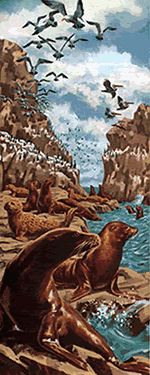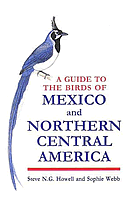DEPARTMENT of ORNITHOLOGY & MAMMALOGYmammals@calacademy.org Mailing Address: Dept. of Ornithology & MammalogyCalifornia Academy of Sciences
The Department of Ornithology and Mammalogy was established in 1853 with the creation of the California Academy of Sciences. After the 1906 earthquake and fire, which destroyed most of the original collections of birds and mammals, the department was reborn with the resurrection of the new Academy of Sciences. As a world renown repository for specimens and their accompanying information, the department's collections currently house over 107,000 specimens of birds and over 30,000 specimens of mammals. The department also houses a modern bioacoustics laboratory and an extensive sound library of over 4,000 recordings. Aside from maintaining these collections, department staff and associates are involved in various scientific studies, conservation efforts, and international research projects.
SCOPE & COVERAGE Over 120 countries are represented by specimens in the collections, but the strengths of the department are its extensive holdings of birds and mammals from western North America, as well as important collections from Mexico and Central America, the Galapagos Islands, the Solomon Islands, China, Myanmar, the Philippines, and eastern Africa. The department contains one of the world's largest collections of marine mammals with several thousand specimens of seals, sea lions, whales, dolphins, sea otters, and sirenians. We are also actively involved in the Marine Mammal Stranding Network, a cooperative organization of several scientific and government institutions that aim to increase knowledge of marine mammals through scientific investigation, collection, and education. IMPORTANCE of the COLLECTIONS For nearly a century, researchers have studied our material to better understand the systematics, ecology, and natural history of various bird and mammal species. These types of research have resulted in hundreds of books and scientific publications that have aided groups as diverse as bird watchers, wildlife managers, and evolutionary biologists. In addition, our bird and mammal specimens have been the subject of artwork in many field guides, and have been used in television documentaries, advertisements, and even Hollywood movies. Museum specimens also yield valuable and unique biological information about a species, as well as providing crucial samples for DNA research, isotopic studies, toxicological analysis, and archaeological identifications. More importantly, data from our specimens are used by universities, state & federal agencies, conservation groups, and international governments to develop educational programs, draft management plans, establish reserves, restore habitats, and protect endangered species. The collections have been accredited by the American Society of Mammalogists, and have maintained a high ranking with the American Ornithological Union Survey of Museum Collections. RESEARCH Staff and associates of the Department of Ornithology and Mammalogy are actively involved in many different areas of scientific research around the world. These include ongoing studies of systematics, anatomy, ecology, conservation, evolution, & paleontology of birds and mammals in the US, China, Myanmar, Namibia, New Guinea, New Zealand, and elsewhere around the globe. |
|


